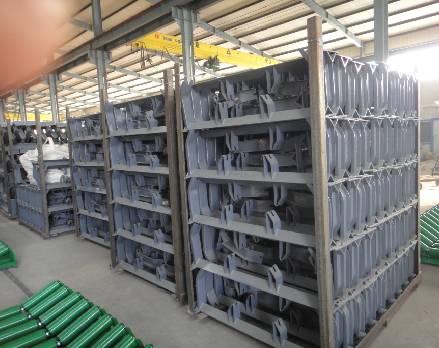 Afrikaans
Afrikaans  Albanian
Albanian  Amharic
Amharic  Arabic
Arabic  Armenian
Armenian  Azerbaijani
Azerbaijani  Basque
Basque  Belarusian
Belarusian  Bengali
Bengali  Bosnian
Bosnian  Bulgarian
Bulgarian  Catalan
Catalan  Cebuano
Cebuano  Corsican
Corsican  Croatian
Croatian  Czech
Czech  Danish
Danish  Dutch
Dutch  English
English  Esperanto
Esperanto  Estonian
Estonian  Finnish
Finnish  French
French  Frisian
Frisian  Galician
Galician  Georgian
Georgian  German
German  Greek
Greek  Gujarati
Gujarati  Haitian Creole
Haitian Creole  hausa
hausa  hawaiian
hawaiian  Hebrew
Hebrew  Hindi
Hindi  Miao
Miao  Hungarian
Hungarian  Icelandic
Icelandic  igbo
igbo  Indonesian
Indonesian  irish
irish  Italian
Italian  Japanese
Japanese  Javanese
Javanese  Kannada
Kannada  kazakh
kazakh  Khmer
Khmer  Rwandese
Rwandese  Korean
Korean  Kurdish
Kurdish  Kyrgyz
Kyrgyz  Lao
Lao  Latin
Latin  Latvian
Latvian  Lithuanian
Lithuanian  Luxembourgish
Luxembourgish  Macedonian
Macedonian  Malgashi
Malgashi  Malay
Malay  Malayalam
Malayalam  Maltese
Maltese  Maori
Maori  Marathi
Marathi  Mongolian
Mongolian  Myanmar
Myanmar  Nepali
Nepali  Norwegian
Norwegian  Norwegian
Norwegian  Occitan
Occitan  Pashto
Pashto  Persian
Persian  Polish
Polish  Portuguese
Portuguese  Punjabi
Punjabi  Romanian
Romanian  Russian
Russian  Samoan
Samoan  Scottish Gaelic
Scottish Gaelic  Serbian
Serbian  Sesotho
Sesotho  Shona
Shona  Sindhi
Sindhi  Sinhala
Sinhala  Slovak
Slovak  Slovenian
Slovenian  Somali
Somali  Spanish
Spanish  Sundanese
Sundanese  Swahili
Swahili  Swedish
Swedish  Tagalog
Tagalog  Tajik
Tajik  Tamil
Tamil  Tatar
Tatar  Telugu
Telugu  Thai
Thai  Turkish
Turkish  Turkmen
Turkmen  Ukrainian
Ukrainian  Urdu
Urdu  Uighur
Uighur  Uzbek
Uzbek  Vietnamese
Vietnamese  Welsh
Welsh  Bantu
Bantu  Yiddish
Yiddish  Yoruba
Yoruba  Zulu
Zulu self cleaning tail pulley
Self-Cleaning Tail Pulley Enhancing Conveyor System Efficiency
In the bustling world of industrial operations, where efficiency and productivity are key, the role of conveyors cannot be overstated. Among the vital components that enhance the functionality of conveyor systems is the tail pulley. This article delves into the importance of self-cleaning tail pulleys and their significant benefits in various industries, including mining, manufacturing, and bulk material handling.
Understanding the Tail Pulley
The tail pulley is the component located at the end of a conveyor belt system. It plays a crucial role in maintaining belt tension, supporting the return side of the belt, and facilitating the movement of materials. However, one challenge that frequently arises is the accumulation of material around the tail pulley. This buildup can lead to operational issues, downtimes, and increased maintenance costs.
The Need for Self-Cleaning Mechanisms
Due to the harsh environments in which conveyor systems often operate, tail pulleys are prone to sticking materials and debris. This accumulation can cause serious disruptions—such as belt misalignment, excessive wear, and even system failures. To mitigate these issues, industries have turned to self-cleaning tail pulleys, which are designed to automatically remove any unwanted material that adheres to the pulley surface.
Self-cleaning tail pulleys typically incorporate various features, such as grooves, tapered designs, or rubberized surfaces that allow debris to be dislodged easily. By minimizing the material buildup, these innovative designs not only enhance the operation of the conveyor system but also extend the lifespan of the tail pulleys themselves.
Benefits of Self-Cleaning Tail Pulleys
self cleaning tail pulley

1. Reduced Downtime One of the most significant advantages of self-cleaning tail pulleys is the reduction in downtime. Traditional tail pulleys often require manual cleaning, which can disrupt operations and delay production schedules. Self-cleaning designs minimize these interruptions by reducing the frequency of maintenance required.
2. Improved Efficiency By preventing material buildup, self-cleaning pulleys ensure that the conveyor system operates at optimal performance levels. This efficiency translates to better throughput, helping industries meet their production targets without compromising quality.
3. Cost-Effective Solution Although the initial investment in self-cleaning tail pulleys may be higher than conventional models, the long-term savings are substantial. Reduced labor costs for maintenance, lower frequency of replacements, and decreased risk of mechanical failures lead to significant cost savings over time.
4. Enhanced Safety Material buildup can be hazardous, leading to slip and fall incidents in work environments. Self-cleaning tail pulleys minimize these risks by keeping the area around the pulley clean and free from debris, which contributes to a safer workplace.
5. Versatility Across Industries The benefits of self-cleaning tail pulleys extend across various sectors, including mining, agriculture, and waste management. For instance, in mining, where heavy and abrasive materials are frequent, self-cleaning tail pulleys can endure harsh conditions while maintaining performance. In agriculture, they can effectively handle the transportation of grains and fertilizers without the accumulation of residues.
Conclusion
In an industrial landscape that prioritizes efficiency and safety, self-cleaning tail pulleys stand out as a valuable innovation. By addressing the common issues associated with material buildup around tail pulleys, these components enhance the reliability and productivity of conveyor systems. As industries continue to evolve and seek ways to optimize their operations, the adoption of self-cleaning tail pulleys will likely grow. These systems not only offer practical solutions to long-standing problems but also contribute to the overall sustainability of industrial processes by ensuring that equipment functions at peak performance for extended periods.
In conclusion, implementing self-cleaning tail pulleys represents a proactive approach to conveyor system maintenance and efficiency. By investing in such technology, businesses position themselves to meet the demands of a competitive market while ensuring a safer and more productive working environment.
-
Revolutionizing Conveyor Reliability with Advanced Rubber Lagging PulleysNewsJul.22,2025
-
Powering Precision and Durability with Expert Manufacturers of Conveyor ComponentsNewsJul.22,2025
-
Optimizing Conveyor Systems with Advanced Conveyor AccessoriesNewsJul.22,2025
-
Maximize Conveyor Efficiency with Quality Conveyor Idler PulleysNewsJul.22,2025
-
Future-Proof Your Conveyor System with High-Performance Polyurethane RollerNewsJul.22,2025
-
Driving Efficiency Forward with Quality Idlers and RollersNewsJul.22,2025





























